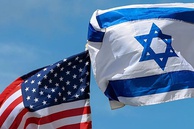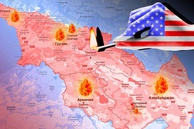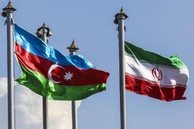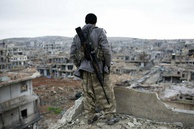The coronavirus known under the official name of Covid-19 has been raging across Europe for nearly four months. The World Health Organization (WHO) has announced a pandemic.
According to data on the morning of March 16, [1] the total number of Covid-19 infections in 146 countries amounted to 162687 people, 76% of which registered in four countries - China, Italy, South Korea and Iran. [2] According to the latest data from the Iranian Ministry of Health, on March 16, the number of coronavirus infections in the country reached almost 14,000 people, 4,590 of whom recovered. The death toll amounted to 724 people. [3]
Here are charts that demonstrate the situation for 14 – 15 March.[4]
Mortality rate from coronavirus per 1 mln. for 14 March 2020.
Country | Number of deaths per 1 mln. residents | |
1 | San-Marino | 147.3 |
2 | Italy | 23.8 |
3 | Iran | 7.3 |
4 | Spain | 4.1 |
5 | China | 2.2 |
6 | Luxemurg | 1.6 |
7 | Switzerland | 1.5 |
8 | Korea, Republic | 1.4 |
9 | Guyana | 1.3 |
10 | France | 1.2 |
11 | World | 0.7 |
The mortality rate among those diagnosed with coronavirus varies widely. If we consider countries with the number of 15 cases or more, mortality rate as of March 14, 2020, range from 0.1% in Norway to 9.9% in Iraq. In comparison, a seasonal flu usually kills less than 1% of those infected. [5]
Mortality rate in percentage points among those infected for 14 March 2020.
Country | Mortality (% of deaths in relation to infected) | Number of infected (official reports) | |
1 | Iraq | 9.90 | 101 |
2 | Philippines | 8.16 | 98 |
3 | Algeria | 8.11 | 37 |
4 | Italy | 6.81 | 21 157 |
5 | Azerbaijan | 6.67 | 15 |
6 | Argentina | 6.45 | 31 |
7 | Bulgaria | 6.45 | 31 |
8 | San Marino | 6.25 | 80 |
9 | Ecuador | 5.88 | 17 |
10 | Indonesia | 5.21 | 96 |
11 | Iran | 5.20 | 13 938 |
12 | China | 3.80 | 8 1003 |
13 | World | 3.72 | 16 2687 |
14 | All countries except China | 3.65 | 81 684 |
Iran is among the main victims to Covid-19. Of course, not being an epidemiologist, an infectious disease specialist, a virologist, a bacteriologist, a specialist in the field of sanitation, it is difficult to ascertain why some countries are more exposed to coronavirus, others less, regardless of geographical location or distance from the original source of the epidemic - in this case, China.
Iran demonstrates a very high mortality rate from this virus - 5.2%. Another feature of the pandemic in Iran is that many government officials have succumbed to it. According to Iranian MP Abdulrez Mesri, at least 23 deputies of the Majlis have been infected with Covid-19. The first Vice President of Iran, Eskhak Jahangiri, Iranian Vice President Masume Ebtekar, Ali Akbar Velayati - adviser to the spiritual leader of Iran Ayatollah Ali Khamenei, Mohammad Sadr, member of the Council for determining the appropriateness of decisions, [6] Minister of Tourism, Cultural Heritage and Crafts Ali Asgar Munesan, Minister of Commerce, Industry and Mines Reza Rahmani. In addition to them, among the afflicted is Deputy Minister of Health, who led the government coronavirus group, Iraj Harirchi, and the head of the emergency medical service, Pirhossein Kulivand. [7]
Perhaps no other country has reported so many fatalities from Covid-19 among senior officials and politicians as Iran. In the weeks during which the coronavirus raged in Iran, it unfortunately took the lives of such statesmen as: member of the Council on Expediency Mohammad Mirmohammadi, former Iranian Ambassador to the Vatican and Deputy of the Mfjlis Hadi Khosroshahi, former Iranian Ambassador to Syria and adviser to Foreign Minister Mohammad Javad Zarif, Hossein Sheikh al-Eslam, former adviser to the head of the Foreign Ministry, Ahmad Toiserkani - adviser to the head of the judiciary of Iran, Ibrahim Raisi, Farzad Tazari - deputy head of the political affairs department of the Islamic Revolutionary Guards Corps (IRGC), General IRGC Nasser Shaabani, who served in the Corps for 37 years, Mohammad Khoja Abolkasemi - an important person in the intelligence and power circles, Mohammad Reza Rahchamani - a prominent politician of the liberal reform wing, Fateme Rahbar, a radically conservative woman politician who was re-elected to the Majlis in the February 21 elections, Mohammad Ali Ramezani, who was also re-elected to the new parliament. In addition, in recent days, three high-ranking officers of the IRGC died from coronavirus in Iran. [8]
The coronavirus epidemic began in Iran in late January - early February. The epicenter of the epidemic was the holy city of Qum - the ideological capital and spiritual center of Shiite Muslims around the world, "the nest of the Prophet and his family," as believers say. Why, - many observers and political scientists are wondering. After all, Qum is not a multi-million-dollar capital like Tehran, where life buzzes churning a myriad of visitors from different countries thereby contributing to the fast spread of the virus. Qum is not the most popular tourist center in Iran – it is located in a desert, it is populated mostly by Shiite clerics, or Shiite supporters, and it has a variety of religious communities with their own customs and traditions [9]. However, Qum is a popular destination for Shiite pilgrims from all over the world.
Political analysts tend to believe that Qum became the center of Covid-19 epidemic because it has a fairly large concentration of Chinese per area. One of Iran’s major spiritual and educational centers – International University “Al-Mustafa” – has more than 40,000 undergraduates, more than 700 of them come from China [10].
Significantly, there are about 40 million Muslims in China, about four million of them are Shiites (mainly Ismaelites). Tehran, without encroaching upon the sovereignty of China, has been pursuing a cautious purpose-oriented policy among the Chinese Muslims, creating an Iran-friendly public environment, including through holding religious and ideological training in Islamic centers in Qum. Some Chinese nationals return home as pro-Iranian missionaries.
What is interesting to learn is that in 2014 Qum’s religious centers began to teach Chinese and Chinese language programs were introduced in seminaries in Esfahan and other cities.
Speaking about the rising number of Chinese in Iran we must remember that trade and economic relations between the two countries have been developing at fast pace despite the US sanctions. According to the results of the year 2018, trade between Beijing and Tehran increased by 12% to 42 billion dollars. [11]
In September 2019 Iran and China signed a package of agreements which envisages China’s 400 billion dollar worth investments in Iranian economy within the next 25 years. Namely: 280 billion will go to the oil, gas and petrochemical industries of Iran, another 120 billion will be channeled to upgrade the transport and production infrastructure in Iran. Given that plans to modernize the infrastructure and industrial facilities in Iran fully match the Chinese One Belt, One Road initiative, the loan program and the construction project went into operation and Chinese experts headed to Iran.
The agreement signed provides for the deployment of up to 5,000 Chinese security employees in Iran in order to protect Chinese projects. In addition, according to Iranian sources, the parties concerned are looking into the possibility of attracting extra forces for the protection of transit supplies of oil and gas to China via the Persian Gulf [12].
China is skillfully finding its way into Iranian business. In the conditions of anti-Iranian sanctions China occupies niches vacated by US-dependent companies and businesses. (This was the case during the 2012-2015 sanction period, this is the case now). The Chinese privately run small and medium-sized businesses have been particularly active.
Chairman of the Iranian Chamber of Commerce and Industry Massoud Khansari underscored as he visited Beijing in November 2019 that private sector plays a great role in the development of economic ties between the two countries. Interestingly, the cooperation agreement was signed between the Iranian Chamber of Commerce and Industry, the private sector of China and Iranians living in the north of China.[13]
Overall, hundreds of Chinese companies and organizations employing thousands of Chinese nationals are operating in Iran. Chinese businessmen are present in Qum too.
Although the presence of Chinese (as we now know, they are potential coronavirus carriers) in Iran was not the only cause of such a fast spread of the disease, but on February 19, two days before the Iranian government announced a coronavirus epidemic, a businessman who had returned from China died in Qum.
Several factors contributed to Iran turning into one of the Covid-19 epidemic centers.
Firstly, the Iranian authorities delayed the official announcement of the epidemic for fear of a low turnout at the February 21 Majlis elections, even though every day, every hour the disease claimed more victims.
Secondly, Qum’s clergy came out against medical recommendations issued by the Ministry of Health, including introduction of quarantine, in a belief that “the invisible hand of the enemy was behind the emergency recommendations from health officials”.
The Mullahs insisted that the holy city of Qum was immune to all disease. They urged residents to visit the local shrine – Fatima Masumeh sepulcher – to pray for the sick in order to secure a miraculous recovery for themselves.
When the officials suggested quarantine for the Fatima Masumeh mosque, Khamenei’s chief representative in Qum Mohammad Saidi agreed with the majority of the Qum clergy that the mosque should not be closed. Mohammad Saidi announced on February 22 that “no one would let the enemy portray Qum as a dangerous place; that defeat of Qum was the dream of crafty Trump and his mercenaries but that dream would never come true, even in their graves”….[14]
The same scenario was observed nearly all over the country. Thousands of believers gathered in mosques to pray for health. This led to a dramatic increase in the number of people infected and considerable delays in taking anti-virus measures.
Thirdly, the political situation in Iran of late has been tense. The epidemic struck Iran right after a number of crisis events: mass protests against rising petrol prices in November 2019 which transformed from economic to political; the killing of General Soleimani and the aggravation of Iranian-American relations; the mistaken shooting down of a Ukrainian airliner with Iranian nationals on board. This distrust in the authorities on the part of the public led to people ignoring the recommendations of health officials in the first weeks of the epidemic. This had a negative effect on the anti-virus effort as well.
Fourthly, the healthcare system in Iran, even though it has been progressing in recent years, is far from the level needed to address a pandemic. Though, in general, the health service in the country is better and much more effective than in most countries of the Middle East.
Undoubtedly, what delayed the modernization of Iranian healthcare system was austere international sanctions which were imposed against Iran in 2012-2016, and the US sanctions introduced in 2018. Iran was de facto deprived of the opportunity to purchase modern medical equipment, medicaments, research materials and other kinds of medical and sanitation produce in required quantities. All this is the result of the restriction of trade with Iran and a fall in Iranian incomes.
However, despite the difficulties, Iran has achieved impressive progress in biotechnology, which will likely serve as a scientific foundation for a decisive attack on Covid-19.
Here is a comparative analysis of the healthcare status in different countries. The table is based on information from the Knoema website (https://knoema.ru/atlas/). The data is for 2015 - 2018
Country | Spending on healthcare | Spending on healthcare per capita ($) | Number of doctors per 1000 residents | Number of beds per 1000 residents |
Iran | 8.1 | 415 | 1,1 | 1,5 |
Russia | 5.3 | 469 | 4,0 | 8,2 |
Germany | 8,2 | 4714 | 4,2 | 8,3 |
Israel | 7,3 | 2837 | 3,2 | 3,1 |
USA | 17,1 | 9870 | 2,6 | 2,9 |
Having evaluated the situation and the scope of the epidemic with concern, the Iranian authorities stepped up effort to mobilize the population to combat the coronavirus.
On March 3, Iran’s Supreme Leader Ayatollah Khamenei called on citizens to step up the fight against coronavirus across the country. He also urged Iranians to “follow directives and guidelines issued by health officials.”
Emphasizing that the population should heed the recommendations of health officials regarding coronavirus control and its non-proliferation, Ayatollah Khamenei added: “These recommendations should not be ignored, because God obliged us to answer for our health and the health of others. Therefore, all steps that contribute to improving the health of society and lead to non-proliferation of this disease is the right act, whereas what contributes to its spread is the wrong act. ”[15]
A little later, the Supreme Leader described what was happening in the country as a disaster adding that though the IRI knew much more serious troubles, it no case should play down the danger. [16]
In turn, Iranian President Hassan Rouhani said on March 4 that the authorities will try to overcome the coronavirus crisis in the shortest possible time and with minimal losses. He acknowledged that the Covid-19 affected almost all the provinces of Iran. [17]
In accordance with instruction by the authorities, the National Headquarters for the Control of Coronavirus and Disease Prevention was set up, headed by the Minister of Health.
Involved in the anti-virus effort is the Islamic Revolutionary Guards Corps (IRGC) and the Army’s ground forces. Rear Admiral Ali Fadawi, deputy commander of the IRGC, said that the Corps has established a permanent center, Shafa, to combat the coronavirus infection. The IRGC base is working in cooperation with the "National Headquarters for Control of Coronavirus and Disease Prevention."
Corps spokesman General Ramezan Sharif said the IRGC had mobilized 100,000 of its members, as well as the Basij Resistance Force (IRGC), to help the government and people to stop the epidemic.
“The extensive IRGC system, including personnel and special-purpose facilities, as well as stationary and field hospitals, care camps, medical centers, and basic necessities and sanitary equipment, which belong to the IRGC and Basij, are available for the specific conditions of the country in the fight against coronavirus” “General Sharif said. [18]
General Behzad Moamen, who is in charge of the Iranian Army’s medical department, said all 28 military field hospitals are ready to assist the Iranian Ministry of Health in treating patients diagnosed with Covid-19. [19]
Mohammad Bagheri, Chief of Staff of the Iranian Armed Forces, said on March 13 that the Committee on Security and Law Enforcement, in tandem with the Ministry of the Interior and the governors, would begin to take measures to clear shops, streets and avenues from visitors and passers-by in order to preclude crowding. He added that over the next 10 days, the condition of all Iranian citizens will be checked via the Internet, by telephone and, if necessary, in person. [20]
Iran’s Health Minister Said Namaki announced in early March that a new national mobilization plan will be in effect across the country to combat the coronavirus epidemic and better treat patients. [21] The plan envisages special training for all 17,000 medical centers and 9,000 medical and clinical centers in all cities, suburban areas and villages. The number of medical laboratories for testing coronavirus infection has already reached 22, and will increase to 40 in the near future. Also, the plan provides for the widespread introduction of home quarantine.
The government has imposed restrictions on travel within the country, especially to the north of Iran, which is part of the red zone. The country has also adopted stringent digital medical control procedures at airports and transport terminals to detect possible infections. Air traffic with epidemic epicenters inside the country and abroad has been suspended.
The authorities have launched decisive action. Disinfection vehicles have appeared in the streets of Tehran, spraying disinfectants, public transport is disinfected on a regular basis.
All schools, universities, theaters, cinemas, and Shiite shrines are closed. Mass events, including Friday prayers, have been canceled. Where possible, quarantine is in effect. All resorts are under quarantine. Institutions have switched to on-line work. Internet traffic is up 40% as Iranians work from home. Shopping centers stand nearly empty.
The head of the Iranian judiciary, Khojatoleslam Ebragim Raisi, said that about 70,000 prisoners across the country have gone on leave after the outbreak of coronavirus. [22]
There are special matchsticks next to ATMs and elevator doors, offering Iranians the option to press buttons without touching the metal surfaces which are potentially infected with coronavirus. In public, some men no longer shake hands and do not kiss in greeting – instead, they touch each other with their boots. [23]
The second round of parliamentary elections in Iran, scheduled for April 17, has been postponed on account of the epidemic. The celebration of Nourouz - the Iranian New Year, which begins on March 21, is under question. In Iran, the New Year holiday lasts until the beginning of April.
Slowly, the Iranians are coming to terms with the situation. There is no shortage of essential goods, daily use products and food.
However, the emergency measures caused by the epidemic have had a negative effect on the economy and, accordingly, on the social sphere. In the first two weeks of the coronavirus crisis, the Tehran Stock Exchange collapsed by 3.44%, while the national currency, which had already suffered significantly at the sanctions, fell by 19%. [24]
According to the Iranian Chamber of Commerce, daily losses from the closure of enterprises and large commercial facilities throughout the country amount to $ 164 million. In addition, there have been cases of bankruptcy of small shops, cafes, hairdressers, car service stations, and taxi drivers. [25]
Undoubtedly, the forced closure of land and air borders with neighbors and partners has struck an extra blow on the Iranian economy, tightening the blockade that the United States imposed in 2018.
Iran has found itself in plight. The American sanctions, a dramatic decrease in oil prices on the world market, the detrimental effect of the coronavirus epidemic on the physical and psychological health of people, and also on the economy, amid the difficult political situation in the country, may herald grave socio-political upheavals.
The opinion of the author may not coincide with the position of the Editorial
[1] All data regarding the effects of coronavirus change almost hourly.
[2] Coronavirus COVID-19 Global Cases by the Center for Systems Science and Engineering (CSSE) at Johns Hopkins University (JHU) [Electronic resource] - URL: https://gisanddata.maps.arcgis.com/apps/opsdashboard/index.html#/bda7594740fd40299423467b48e9ecf6
[3] Ibid.
[4] The site of Radio Echo Moskvy 03/15/2020. [Electronic resource] - URL: https://echo.msk.ru/blog/aillar/2605994-echo/
[5] The site of IA RBC. 03.03.2020. [Electronic resource] - URL: https://www.rbc.ru/rbcfreenews/5e5e9fc19a79474e88d1a5db
[6] In 1988, Iran set up the Council on the Appropriateness of Decisions (Majma-yah tahshis maslahat nezah), which makes a final decision in case of dispute between the Majlis and the Supervisory Board. Permanent and temporary members of the Council are appointed by the Supreme Leader of the country. The powers of the Council are determined by Articles 111 and 112 of the Constitution of Iran. The Council also has advisory functions on issues that are delegated to it by the Supreme Leader. In later years, the powers of this Council were expanded to include the supervision of the activities of the executive, legislative and judicial authorities, the armed forces, etc.
[7] Information Agency website. Free Press 03/06/2020. [Electronic resource] - URL: https://svpressa.ru/war21/article/259123/
[8] According to Iranian media
[9] In Qum, there is a religious center uniting a large number of educational institutions in which both Iranians and foreigners study. The activities of religious educational institutions for foreigners are controlled by the Al-Mustafa International University (Jamiat al-Mustafa al-Aliyiyah). The university is in charge of various madrassas: Imam Khomeini, Khojat, Jamiat Olyum, Jamiat Alu Beit, Bintol-hoda women's madrasah, Jamiat al-Zahra and many other smaller educational institutions. Qum is home to most high-ranking Iranian clerics - Ayatollahs.
[10] Website of the Washington Institute for Middle Eastern Policy. 03.03. 2020. [Electronic resource] - URL: https://www.washingtoninstitute.org/policy-analysis/view/the-coronavirus-in-iran-part-1-clerical-factors
[11] The site of IA Realist. 03/04/2019 [Electronic resource] - URL: http://realtribune.ru/news/news/1711
[12] Petroleum-Economist website. 09/03/2019 [Electronic resource] - URL: https://www.petroleum-economist.com/articles/politics-econo
[12] Petroleum-Economist website. 09/03/2019 [Electronic resource] - URL: https://www.petroleum-economist.com/articles/politics-economics/middle-east/2019/china-and-iran-flesh-out-strategic-partnership
[13] Website Iran.Ru. 11/15/2019. [Electronic resource] - URL: https://www.iran.ru/news/economics/114399/Podgotovleny_osnovaniya_dlya_investiciy_kitayskih_kompaniy_v_Iran
[14] Website of the Washington Institute for Middle Eastern Policy.
[15] Site of the Supreme Leader Ayatollah Khamenei. 03.03.2020. [Electronic resource] - URL: http://russian.khamenei.ir/news/4174
[16] Information Agency website Free Press 03/06/2020. [Electronic resource] - URL: https://svpressa.ru/war21/article/259123/
[17] Website of President Rouhani 03/04/2020. [Electronic resource] - URL: http://president.ir/fa/114132
[18] The site of IA Mehrnews. 03/11/2020. [Electronic resource] - URL: https://en.mehrnews.com/news/156619/Over-100-000-IRGC-Basij-personnel-in-service-to-combat-coronavirus
[19] Website of the EurAsia Daily. 03/11/2020. [Electronic resource] - URL: https://eadaily.com/en/news/2020/03/11/suhoputnye-voyska-irana-strana-nahoditsya-v-usloviyah-voyny-s-koronavirusom
[20] RIA Novosti website. 03/13/2020. [Electronic resource] - URL: https://ria.ru/20200313/1568569427.html
[21] The site of IA Tasnim. 03/12/2020. [Electronic resource] - URL: https://www.tasnimnews.com/en/news/2020/03/12/2221991/iran-s-strategy-against-coronavirus-welcomed-by-who-health-minister
[22] The site of IA Tasnim. 03/09/2020 [Electronic resource] - URL: https://www.tasnimnews.com/en/news/2020/03/09/2219723/70-000-get-prison-furlough-in-iran-amid-covid-19-outbreak
[23] The Guardian website. 03.03.2020. [Electronic resource] - URL: https://www.theguardian.com/world/2020/mar/03/an-absolute-disaster-iran-struggles-as-coronavirus-spreads
[24] Newseek website. 03/12/2020. [Electronic resource] - URL: https://newseek.org/articles/2713882
[25] Ibid.
read more in our Telegram-channel https://t.me/The_International_Affairs

 11:32 18.03.2020 •
11:32 18.03.2020 •



























